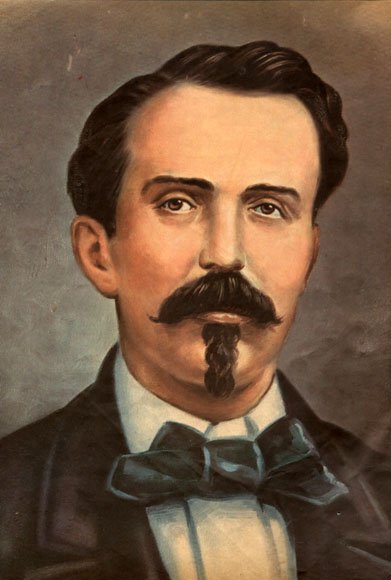With the "10th of October Manifesto" in 1868, Cuban planters declared independence from Spain, beginning the Cuban Revolution. Economic crises and failure for government reforms had filled the island with distaste for their mother country. The Revolutionary Committee of Bayamo had begun in 1867, and Spain worked to suppress the insurgency. Oscar Céspedes was imprisoned in an effort to force submission onto his father, then executed when his father refused. Rather than stymie the rebellion, Spain only fanned the flames.
Many Cubans looked north to the United States for aid, seeing their war as similar to the American Revolution a century before, and the two had long held ties. When president, Thomas Jefferson noted of the strategic significance of the island and suggested annexation, even sending agents to confer with Cuban officials. Under the doctrine of James Monroe, the US looked to turn aside European interests in the Western Hemisphere. However, the US had just finished its Civil War and was going through the costly Reconstruction of the South. President Grant's cabinet was split over possible support: Secretary of State Fish was opposed to a costly intervention (especially because it would weaken moral authority of America demanding reparations for Confederate naval support in British shipyards), while Secretary of War John Rawlins was all for it, partly because he had been given $28,000 worth of bonds that would mature if Cuba became independent. Grant remained stalwart in neutrality, though he ordered ships from the Pacific fleet to reinforce the Caribbean.
On August 14, Fish received letters from the president, who was increasingly supportive of recognizing Cuba, as well as the minister to Spain, Sickles, who said that the Spanish were ready to negotiate. He worked to keep the US neutral, but Rawlins, ill from tuberculosis, stepped over the Secretary of State to speak with Grant personally. After an impassioned pleading and admitting his bonds while using them of evidence for economic support from a revitalized Cuba, Rawlins persuaded Grant to order Sickles to draw up a treaty.
On September 3, Congress approved the Treaty of Madrid with both Spain and the United States recognizing Cuba as independent. Spain would also abolish slavery, while Cuba would pay indemnities in bonds backed by the United States, in return for US control over Cuban tariff rates. Rawlins would die of his consumption three days later, but his family was well supported by sale of his own bonds. Cuba celebrated and began heavy trade with the United States, bolstering the manufacturing industry of the North.
Annexation talks began almost immediately, but it would not be until 1883 that Cuba would become a territory of the United States, a decade after a political coup had forced elections to remove Céspedes from his presidency. Cuba would gain statehood in 1919 as the 49th state, though its government would be soon be the subject of suspicion in the Harding administration. Cuba would serve as a bastion for American influence in the Caribbean, sponsoring the annexation of another former Spanish colony, Puerto Rico, after its own war of independence against Spain in 1928. Other than the short-lived uprising of radical Communists in the 1950s, Cuba remained stalwart as a whole in the American Dream.
–
In reality, Rawlins was unable to convince Grant to become more than disapprovingly neutral in the Cuban war that would eventually be called the Ten Years' War or the First War of Independence, which would be crushed fully in 1878. Two more wars would be fought, the third of which would call in America with the explosion aboard the USS Maine beginning the Spanish-American War. In victory in 1898, America would seize many of Spain's colonies, which would gradually gain their independence such as the Philippines in 1946 and Cuba itself in 1902.

No comments:
Post a Comment